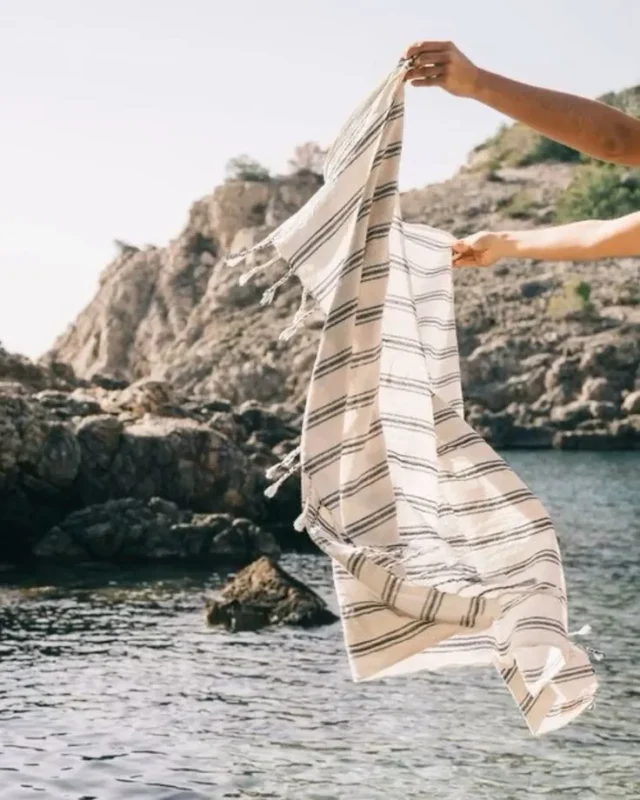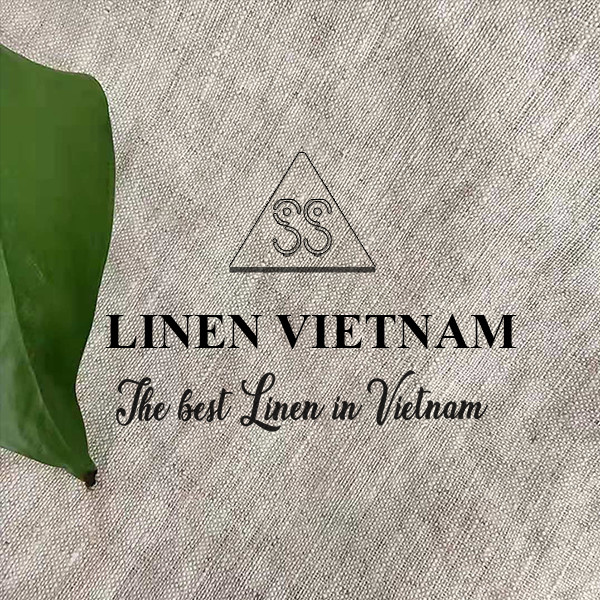Bài viết
5 IMPORTANT THINGS WHEN BUYING LINEN CLOTHING
Are you looking to add linen outfits to your wardrobe? Great idea! Linen is a natural fabric known for its breathability, lightweight feel, antibacterial properties, and sophisticated look. However, not all products labeled “linen” are truly high-quality and worth buying. So how do you choose beautiful, durable, and authentic linen clothing? Here are five key factors to help you make the best choice!
Table of Contents
Fabric Composition – Genuine Linen or Just a Name?
In recent years, linen fashion has become increasingly popular, especially in boho and minimalist styles. However, many brands use the keyword “linen” to attract customers, even though the actual fabric composition may contain only 10-20% linen, with the rest being polyester or synthetic fibers.
Some blends with cotton can be acceptable as they still retain a natural feel, but if the fabric contains too many artificial fibers, it will lose linen’s signature breathability, moisture absorption, and durability. Therefore, always check the fabric composition on the label and prioritize clothing made from 100% linen or with a high linen content.
Linen Vietnam’s Advice: French linen is among the finest, with clear origins and production following European standards. If you want to ensure quality, consider choosing linen from France or other reputable suppliers.
Product Origin – Does “Made in” Matter?
Sustainable fashion isn’t just about materials—it’s also about where and how products are made. Many fast fashion brands rely on low-cost labor under poor working conditions to reduce production costs.
So, when buying linen clothing, besides checking fabric composition, take a moment to research the product’s origin. Brands with transparent, fair, and sustainable manufacturing processes will offer not only high-quality products but also ethically responsible fashion choices.
Linen Vietnam’s Advice: If possible, prioritize brands with clear production origins to support the growth of sustainable fashion.
Dyeing Process – Is Linen Really Safe?
While linen itself is a natural fabric, the dyeing process can impact its safety. Many inexpensive garments are dyed with harmful chemicals, synthetic dyes, formaldehyde, and heavy metals, which can cause skin irritation and environmental pollution.
To protect your skin and health, choose products that use natural dyes or eco-friendly dyeing technology. High-quality French linen, for instance, is often dyed through environmentally friendly processes without toxic chemicals.
Linen Vietnam’s Advice: Check for safety certifications such as European Flax and OEKO-TEX on the product or choose brands committed to clean, chemical-free production.
Fabric Weight – Choosing the Right Linen for Each Season
Linen comes in various weights, suitable for different uses:
- Lightweight linen (below 150 GSM): Thin, breathable, and ideal for summer clothing like linen shirts, dresses, and wide-leg pants.
- Medium-weight linen (150-250 GSM): A moderate thickness, perfect for both fashion and home textiles.
- Heavyweight linen (above 250 GSM): Thick, structured, and less prone to wrinkling—suitable for fall/winter wear, office attire, or durable home textiles requiring high wear resistance.
Linen Vietnam’s Advice: For summer clothing, opt for lightweight linen to stay comfortable and cool. For colder weather or more structured garments, choose heavier linen.
Fabric Softness – Is Linen Comfortable to Wear?
Linen can be either coarse or soft, depending on the fabric treatment process. Some untreated linens may feel slightly stiff, while washed linen undergoes a special treatment that makes it naturally soft, less prone to wrinkling, and more comfortable to wear.
Linen Vietnam’s Advice: If you prefer instant softness, choose washed linen. Alternatively, you can wash the fabric a few times to naturally soften it over time.
Linen Vietnam – A Trusted Linen Supplier & Manufacturer
At Linen Vietnam, every product is a blend of skilled craftsmanship and dedication, delivering long-lasting quality and elegant aesthetics. We are committed to transparency, providing full certification of origin and clear invoices. Our fabrics meet European Flax and OEKO-TEX standards, complying with strict European market regulations. Beyond quality, Linen Vietnam promotes sustainable consumption, contributing to environmental protection and encouraging a green lifestyle in every customer’s choice.
Conclusion
Choosing linen clothing isn’t just about design or price—it requires considering fabric composition, production origin, dyeing process, fabric weight, and softness. Investing in high-quality linen fashion means not only owning a stylish garment but also supporting sustainable fashion.
We hope these insights from Linen Vietnam help you find the perfect linen outfits that suit your needs and style!






